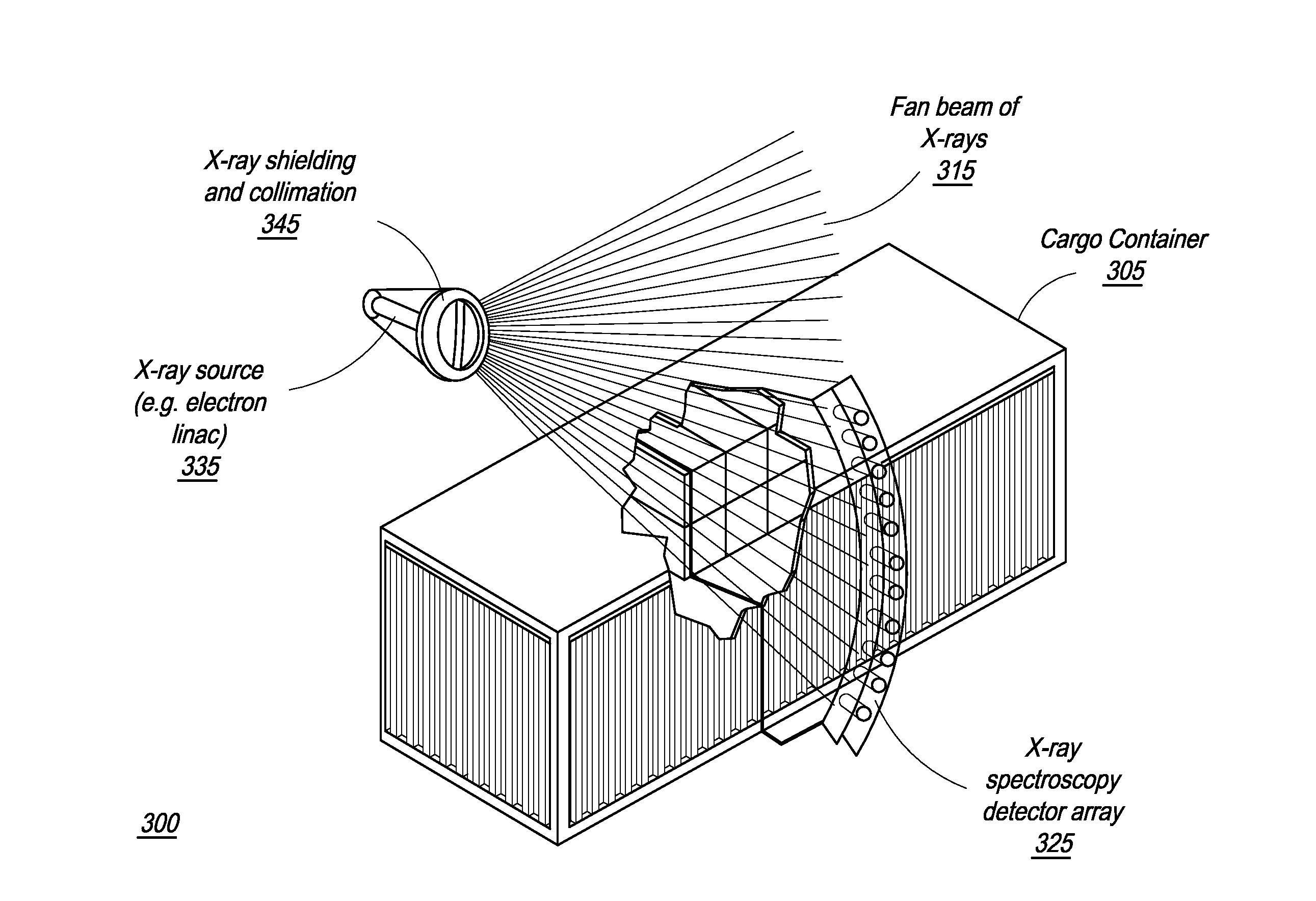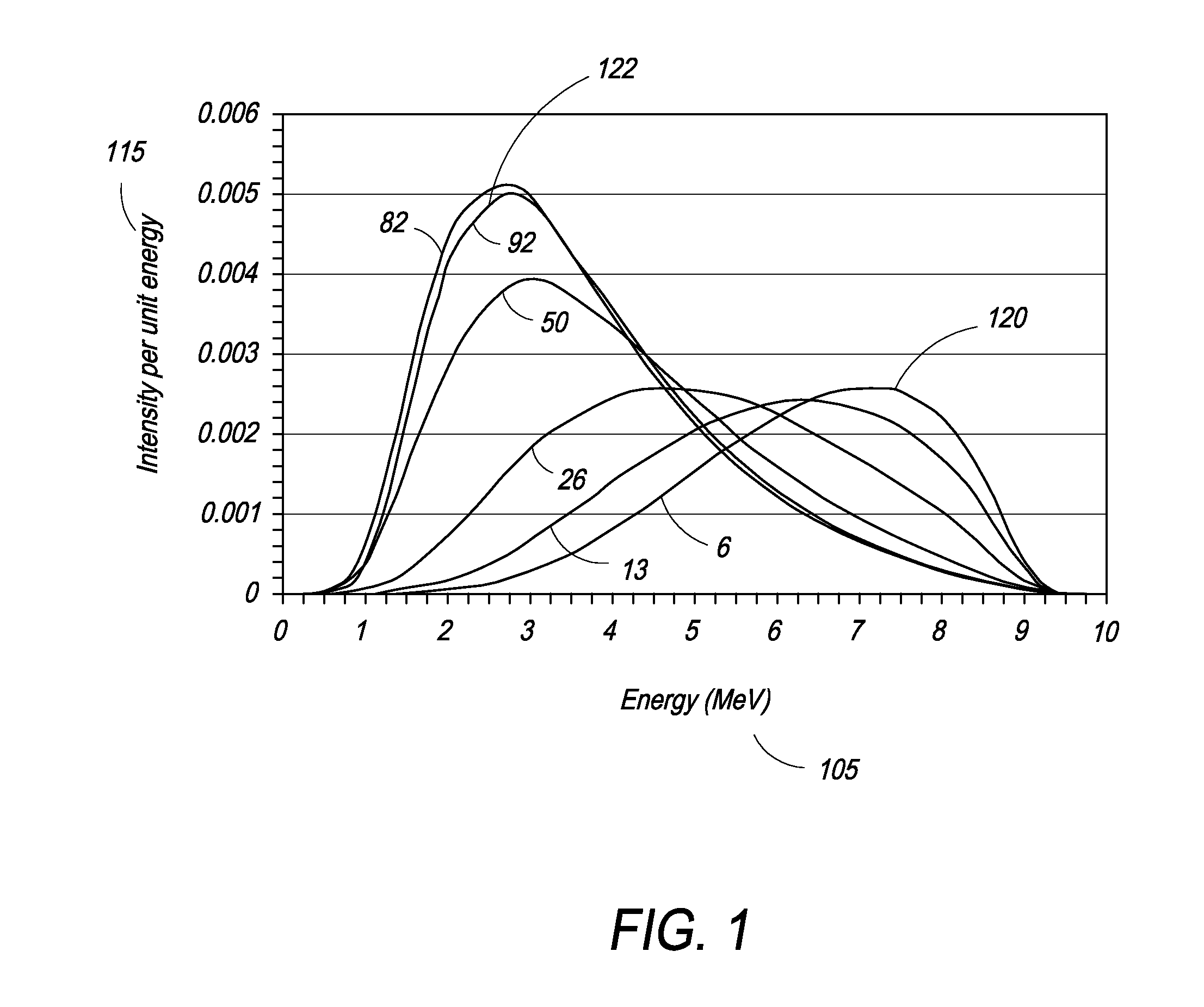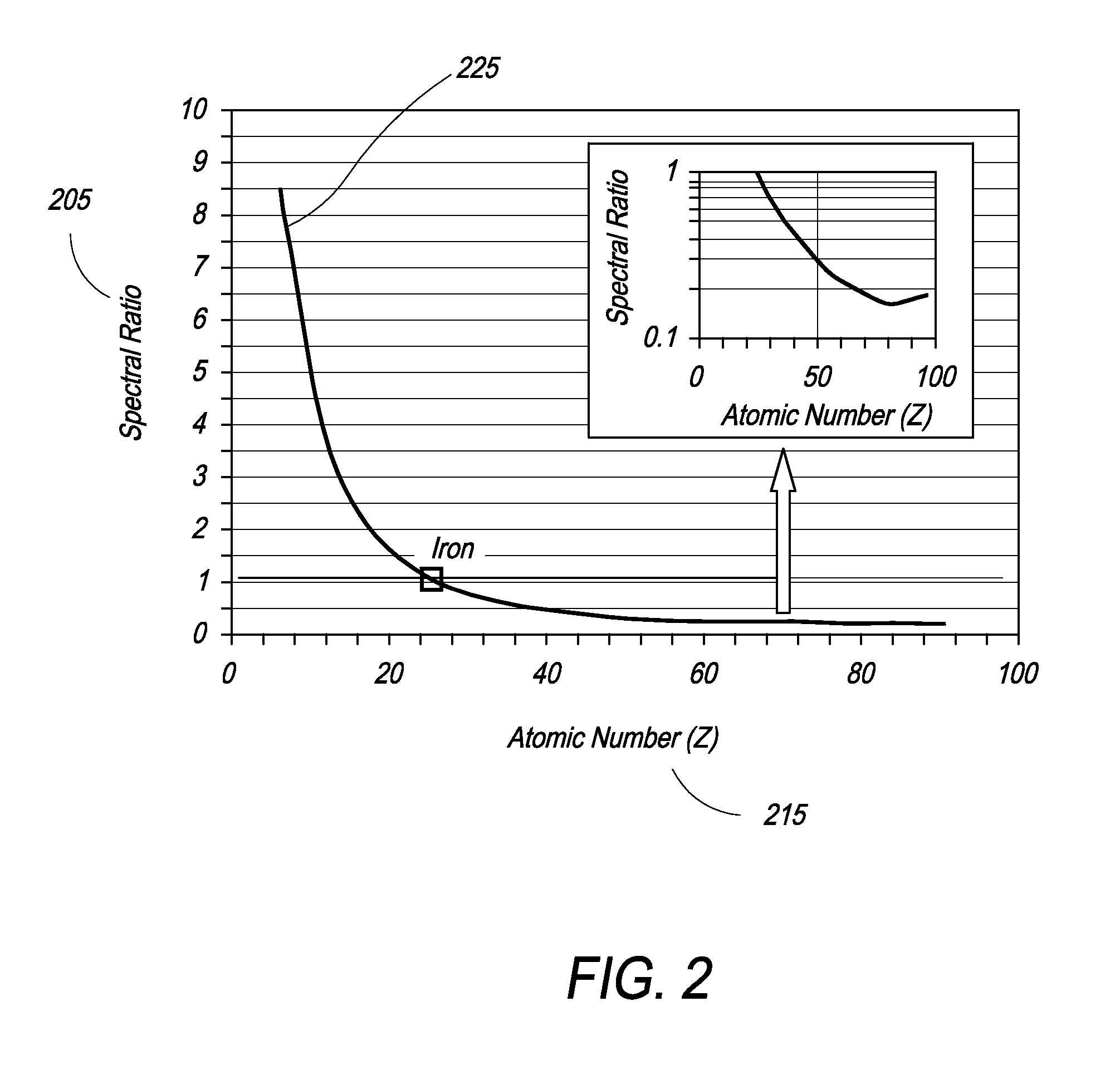High-Energy X-Ray-Spectroscopy-Based Inspection System and Methods to Determine the Atomic Number of Materials
- Summary
- Abstract
- Description
- Claims
- Application Information
AI Technical Summary
Problems solved by technology
Method used
Image
Examples
Embodiment Construction
[0017]The present specification is an improved method of screening cargo that uses spectroscopic information from only the transmitted, or from both the transmitted and scattered, high-energy X-ray beam to provide enhanced detection capabilities of contraband, threats and other targets of interest, which are difficult to detect with current X-ray methods and / or through passive radiation detection techniques known in the art. The system of the present invention delivers improved detection performance for objects of interest either automatically or as a tool to assist an operator, while at the same time reducing false-alarm rate.
[0018]In general, for a given thickness of an absorber, the higher the atomic number, the higher the attenuation of the high end of the X-ray spectrum. Therefore, the transmitted X-ray spectrum is affected by variations in the atomic number of items of various materials inside the cargo.
[0019]The present specification detects and measures the entire energy spe...
PUM
 Login to View More
Login to View More Abstract
Description
Claims
Application Information
 Login to View More
Login to View More - R&D
- Intellectual Property
- Life Sciences
- Materials
- Tech Scout
- Unparalleled Data Quality
- Higher Quality Content
- 60% Fewer Hallucinations
Browse by: Latest US Patents, China's latest patents, Technical Efficacy Thesaurus, Application Domain, Technology Topic, Popular Technical Reports.
© 2025 PatSnap. All rights reserved.Legal|Privacy policy|Modern Slavery Act Transparency Statement|Sitemap|About US| Contact US: help@patsnap.com



